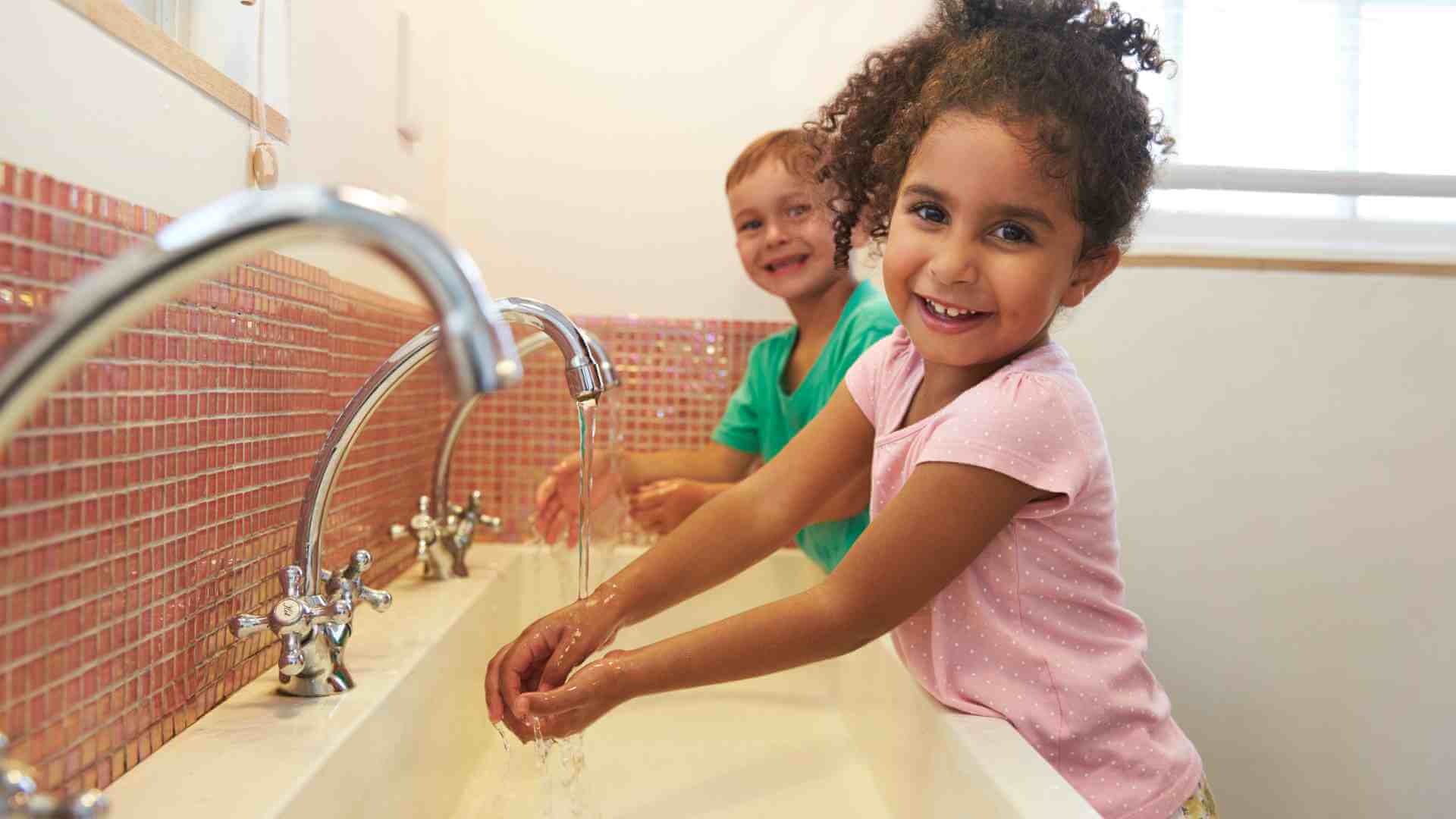How to Address Student Hygiene With a Parent: Tactful Tips
To address student hygiene with a parent, schedule a private conversation and be respectful. Emphasize confidentiality and student well-being.
Discussing a student’s hygiene issues with a parent is a delicate matter that requires tact and sensitivity. Teachers and school administrators often face this challenge, needing to balance the child’s comfort with the effectiveness of the message. It’s important to approach the situation with the utmost respect for the student’s dignity and the parent’s feelings.
A private, face-to-face meeting is usually the most appropriate setting for this discussion. By focusing on the health and social impacts of good hygiene practices, educators can collaborate with parents to support the student’s overall well-being and academic success. It’s crucial to frame the conversation around the child’s best interests and to provide practical suggestions without casting blame. A thoughtful approach helps maintain a constructive relationship with the family and encourages a positive outcome.
Importance Of Open Communication
When it comes to addressing student hygiene with a parent, the Importance of Open Communication cannot be overstated. It is a delicate matter that requires sensitivity, tact, and a willingness to engage in a conversation that might be uncomfortable for both parties. However, open dialogue is crucial as it lays the foundation for understanding, cooperation, and positive change. By fostering transparent communication, schools can work collaboratively with parents to ensure the well-being of their students, which ultimately helps create a conducive learning environment for all.
Establishing Trust
To navigate the sensitive topic of a student’s hygiene with a parent, first and foremost, establishing trust is essential. Parents need to feel confident that their child’s dignity will be preserved and that the school’s intentions are purely in the best interest of the student. School officials should approach this topic with empathy and respect, avoiding any language that could be interpreted as judgmental. A few strategies to build trust include:
- Personalized Communication: Opt for in-person meetings or phone calls rather than impersonal letters or emails.
- Positive Reinforcement: Start the conversation by highlighting the student’s strengths and achievements.
- Privacy Assurance: Ensure the conversation remains confidential between the relevant parties.
Creating A Safe Environment
Creating a Safe Environment is imperative for students to thrive both academically and socially. When discussing hygiene issues, it is important to maintain an environment where parents and students feel safe and not cornered or accused. Emphasize that the school is a partner in their child’s development, and the goal is to support the student’s health and social comfort. Actions to foster a safe environment include:
- Approach the topic with sensitivity and without making assumptions about the underlying causes.
- Provide clear and factual information about the hygiene concern, steering clear of blame.
- Offer resources or suggestions for addressing the issue in a non-threatening manner.
Observing Hygiene Signals
As educators, our role extends beyond the classroom; we often find ourselves concerned with the general wellbeing of our students. Noticing a student’s poor hygiene can be a delicate issue, but it’s crucial to address it promptly and tactfully for the child’s health and social well-being. Spotting the signs early and documenting them can be instrumental in discussing any concerns with a parent. Let’s delve into the critical task of identifying these hygiene signals.
Identifying Telltale Signs
Physical indicators of poor hygiene are usually the most apparent. Keep an eye out for these key signs:
- Unkempt appearance: Frequently wearing dirty or tattered clothes can point to neglect.
- Body odour: A consistent smell could indicate a lack of regular bathing.
- Poor oral hygiene: Evidence of dental decay or persistent bad breath may suggest brushing is irregular.
- Lack of grooming: Uncombed hair or untrimmed nails can be additional clues.
These are immediate, visible flags that educators can notice even during short interactions with the student. Documenting these occurrences provides concrete evidence when approaching the conversation with a parent.
Noting Behavioral Changes
Sometimes, a student’s hygiene issues can manifest in less overt ways. Behavioral shifts may provide critical insight into a student’s situation. Take note of these markers:
- Withdrawal from social interaction: Children sensitive about their hygiene might isolate themselves to avoid bullying or embarrassment.
- Decreased participation: A sudden reluctance to engage in physical activities might indicate a concern about body odour or appearance.
- Distress over routine activities: Signs of anxiety during gym class or reluctance to remove outer garments could signal body image issues related to hygiene.
Observing these changes over time helps build a case that goes beyond the surface, showing the potential emotional impact on the student. This comprehensive approach can help frame the discussion as one of concern for the student’s holistic wellbeing rather than a simple critique of their habits.
Initiate The Conversation
Talking about a student’s hygiene can be sensitive and requires careful handling. As an educator or a school official, it’s important to approach the matter with the goal of supporting the student’s well-being and educational experience. Initiation of this conversation with parents is vital and should be done with tact and discretion. When done correctly, it can lead to positive outcomes for all parties involved.
Choosing The Right Moment
Timing is key when bringing up a delicate issue such as hygiene. To ensure a productive dialogue, consider the following factors:
- Schedule a private meeting to avoid any potential embarrassment for the student or the parent.
- Avoid times of high stress or busy schedules, opting for a quiet, undistracted setting instead.
- Ensure that there is enough time allotted for a thorough discussion, without feeling rushed.
Using Non-confrontational Language
The words chosen can greatly affect the outcome of the conversation. Use non-confrontational language to convey your message:
| Non-Confrontational Approach | Confrontational Approach to Avoid |
|---|---|
| “I’ve noticed” allows for an observation without direct blame. | Avoid outright accusations like “You haven’t been”. |
| Focus on the student’s comfort and participation in class. | Refrain from making it solely about appearances or social norms. |
| Use “we” to suggest partnership in finding solutions. | Do not use “you” which can feel like an attack or criticism. |
Practical Solutions
Discussing a student’s personal hygiene with their parents delicately is crucial. The goal is to approach the situation with sensitivity and tact. Here are some practical solutions that can help guide parents towards ensuring their child’s hygiene needs are met without causing embarrassment or strain on relationships.
Offering Personal Hygiene Kits
One of the most thoughtful ways to address hygiene concerns is to provide personal hygiene kits to students. These kits could include basic items such as soap, deodorant, a toothbrush, toothpaste, and wet wipes. By equipping students with these essentials, parents can reinforce the importance of cleanliness in a supportive, non-confrontational way.
- Soap: To maintain daily cleanliness.
- Deodorant: To help manage body odor.
- Toothbrush and Toothpaste: For oral hygiene maintenance.
- Wet Wipes: For quick clean-ups when needed.
Suggesting Establishing Routines
Encouraging parents to help their child establish a consistent hygiene routine can create lasting habits that span into adulthood. This might include setting specific times for bathing, teeth brushing, and other grooming activities. Not only does this impart the significance of regular self-care, but it also integrates these practices into the student’s daily life seamlessly.
| Morning Routine | After School | Evening Routine |
|---|---|---|
|
|
|
Collaborating With School
Addressing student hygiene issues is a sensitive topic that requires a delicate and collaborative approach. Partnering with the school ensures a unified and supportive strategy when engaging with parents about their child’s hygiene. By working closely with school staff and resources, both teachers and parents can navigate this delicate conversation with compassion and understanding.

Working Together For Support
Collaborating with the school can provide a robust support system for both educators and families. Communication is key in building a bridge between the classroom and the home. Schools often have protocols in place for such situations, and aligning with these can be beneficial. Teachers can start by:
- Discussing the concern with a school counselor or nurse who may offer additional insights or strategies.
- Accessing resources that the school may have available for families, such as workshops on hygiene practices.
- Creating a plan with school officials on how to approach the conversation with the parent in a non-confrontational manner.
It’s important to ensure a unified message and show that the school is supportive and willing to assist in resolving the issue.
Seeking Professional Guidance
In cases where hygiene issues may stem from deeper social or economic factors, seeking out professional guidance is crucial. Engaging experts can provide much-needed perspective and advice on how to address the situation thoughtfully. Steps to consider include:
- Consulting with a social worker who can assess any underlying issues the family may be experiencing.
- Referring parents to community health services for additional support and assistance.
- Partnering with school psychologists for tips on how to communicate effectively about sensitive issues.
Expert advice ensures that the child’s wellbeing is prioritized and that the approach taken is informed and empathetic.
Frequently Asked Questions For How To Address Student Hygiene With A Parent
How To Discreetly Discuss Student Hygiene Issues?
Addressing student hygiene sensitively is key. Request a private meeting with the parent, ensuring it’s a comfortable setting. Be empathetic and fact-based, avoiding accusatory language. Discuss how hygiene affects both learning and social interactions. Offer resources or solutions if possible to help the family.
What Steps Should Teachers Take Before Meeting Parents?
Before the meeting, teachers should document specific concerns and any patterns observed. Gather input from other educators if relevant. Understanding the student’s background can provide context. Approaching the topic with sensitivity and preparedness is crucial. Plan the discussion points and possible outcomes carefully.
Can Schools Provide Hygiene Supplies For Students?
Many schools can provide basic hygiene supplies through various programs. They often partner with charities or have funds for such necessities. Talk to your administration about available resources. This ensures students have access to items like soap, deodorant, and clean clothes if needed.
How To Foster A Positive Dialogue About Hygiene?
Start the conversation with positive comments about the student’s strengths. Introduce the hygiene topic as something that is important for all students. Listen actively and be open to the parent’s perspective. Collaborate on practical strategies to support the student’s hygiene at school and home.
Conclusion
Navigating the sensitive subject of student hygiene with a parent is crucial. By maintaining an empathetic approach, you foster a healthy dialogue. The strategies shared aim to empower educators and guardians alike. Remember, collaboration is key to ensure students thrive in a supportive environment.
Let’s prioritize respectful communication for our children’s well-being.








